Advertisement
Genetic mutation implicated in one third of cases
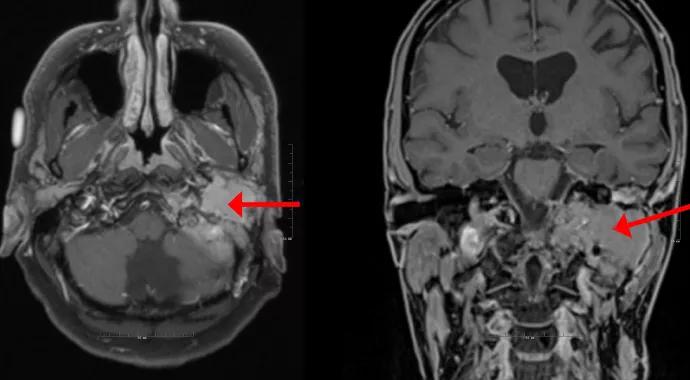
By Jessica Moline, MS; Charis Eng, MD, PhD; Robert Lorenz, MD; and Erika Woodson, MD
Advertisement
Cleveland Clinic is a non-profit academic medical center. Advertising on our site helps support our mission. We do not endorse non-Cleveland Clinic products or services. Policy
Paragangliomas were long regarded as the “10 percent tumor” — 10 percent familial, 10 percent malignant and 10 percent extra-adrenal. It turns out that the familial component of that rule of thumb, however, is greater than once thought.
In a multidisciplinary effort, otolaryngologists in Cleveland Clinic’s Head & Neck Institute are collaborating with oncologists and medical geneticists to identify and manage patients with genetic predispositions to paraganglioma.
Since a large proportion of patients with a paraganglioma have an underlying hereditary predisposition syndrome, all patients, including those with an apparently sporadic tumor, should be referred for a genetics consultation. Genetic counseling and testing are critical for guiding treatment and surveillance, not only for patients but for their gene-positive relatives as well. First-degree relatives have a 50 percent chance of inheriting the familial gene mutation.
Hereditary paraganglioma-pheochromocytoma syndrome is a newly identified condition, so no consensus guidelines for surveillance exist. At Cleveland Clinic, we recommend that unaffected individuals with mutations in any of the aforementioned genes undergo annual biochemical surveillance for functional paraganglioma (plasma and/or 24-hour urine collection for catecholamines and their metabolites). We also recommend imaging every two years for patients with nonfunctional and functional tumors. Imaging typically comprises MRI or spiral high-resolution CT and either dihydroxyphenylalanine PET or a meta-iodobenzylguanidine scan. The MRI or CT should also be used for detection of SDHB-associated thyroid and kidney cancers.
To further understand the genetic etiology of paraganglioma and pheochromocytoma, Charis Eng, MD, PhD, Chair of the Genomic Medicine Institute, and Jessica Moline, a certified genetic counselor-coordinator at Cleveland Clinic, are conducting a multicenter research study that involves germline testing of the SDH genes as well as tumor banking and genomic analysis of tumor DNA. The aims of their project are to learn more about known susceptibility genes, to investigate other potential genetic causes of paraganglioma and to learn how each specific gene confers different risks of paraganglioma/pheochromocytoma and/or extraparaganglial neoplasias. This type of research will enhance gene-specific clinical management.
Knowledge of the distinct genotype-phenotype correlations for the various predisposition genes can be useful when considering treatment and surveillance. For example:
The specialists at Cleveland Clinic advocate for a balanced approach of surgery, observation and radiation to maximize functional outcomes. Our management is customized, with no single “right way” for all patients.
For many years, microsurgical resection was the only reliable treatment for patients with skull base paragangliomas. However, surgical resection is associated with a high rate of morbidity; specifically, lower cranial neuropathies can lead to voice dysfunction, swallowing dysfunction and occasionally the need for a tracheostomy.
Hearing loss and at least temporary facial paresis are also likely after surgical resection. Finally, the recurrence rate of these tumors is high, so long-term observation is strongly recommended, even after complete tumor removal. Recurrence rates as high as 1 in 3 among patients with germline mutations and 1 in 7 among patients without identifiable mutations have been reported.
Advertisement
For paraganglioma patients without complications and without significant tumor growth on imaging over time, we are considering treatment algorithms that are more conservative than was the case in years past. This is especially true of glomus vagale tumors, for which surgical extirpation would require resection of the vagal nerve.
When serial imaging does show tumor growth, immediate reinnervation of the recurrent laryngeal nerve — with potential cricothyroid-to-cricothyroid grafting in patients with concurrent resection of the superior laryngeal nerve — has been demonstrated to lead to normal voices and swallowing resolution postoperatively.
Gamma Knife® radiosurgery (GKRS) has become an attractive alternative to surgical resection of glomus tumors, particularly when the functional status of the lower cranial nerves is good. The key advantage of GKRS is that it allows for a single administration of highly conformed low-dose radiation to the tumor, which minimizes the dose to critical structures such as the cochlea, carotid artery and brain stem, as well as to the cranial nerves. Another advantage is that GKRS is typically an outpatient procedure, practically eliminating downtime for the patient. Control rates in the literature have been excellent thus far — greater than 95 percent in one meta-analysis.
Several considerations in selecting patients for GKRS are as follows:
Advertisement
Many centers, including Cleveland Clinic, are offering patients partial tumor resections to reduce symptom severity and to improve functional outcomes. The images that accompany this article are from a patient who was diagnosed with a massive recurrence of a previously resected tumor. The tumor was too large to allow for radiosurgery, and the patient had synchronous lesions, including an ipsilateral vestibular schwannoma and a cholesteatoma in the closed-off ear and mastoid cavity (Figure 1). The patient underwent resection of most of the tumor bulk, but some residual tumor was left in the pars nervosa so that the integrity of the lower cranial nerves was not compromised (Figure 2). Radiosurgery can be performed at a later date to control the growth of the much smaller tumor remnant if the need arises.
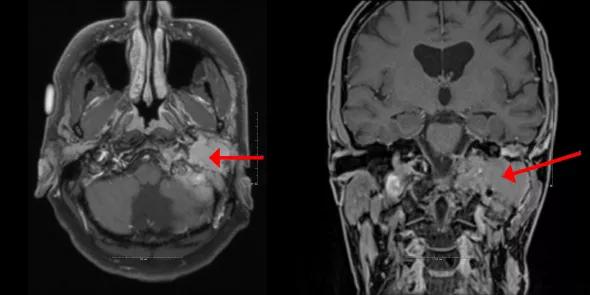
Figure 1. Axial (left) and coronal (right) MRIs show a massive recurrent left glomus jugulare tumor (arrows) involving the petrous apex and the posterior fossa dura in a previously operated ear. During the patient’s previous surgery, the facial nerve was rerouted at the geniculate ganglion, and the ear canal was oversewn. Not shown is a labyrinthine fistula from the epidermoid cholesteatoma lateral to the glomus tumor and a synchronous intracanalicular vestibular schwannoma in the same ear.
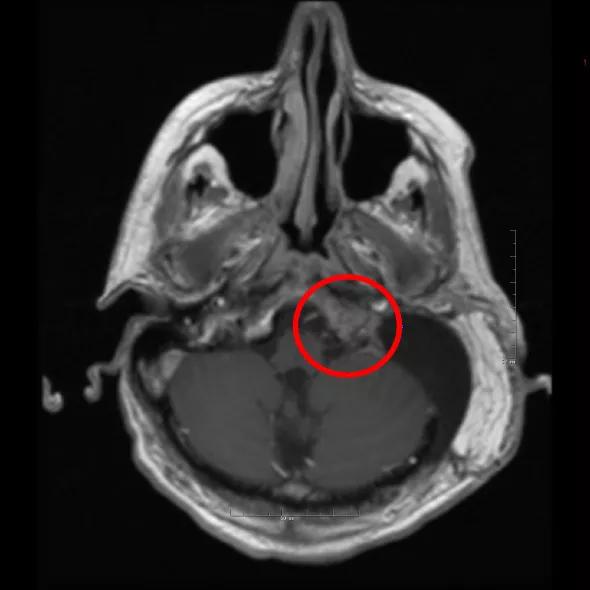
Figure 2. Postoperative imaging in the patient from Figure 1 confirms the near-total resection of the glomus jugulare tumor and total removal of the vestibular schwannoma and cholesteatoma. The tumor remnant (circle) in the petrous apex was left in order to preserve the pars nervosa. An anterolateral free-tissue transfer from the thigh was used to reconstruct the dura and soft tissue.
Ms. Moline (molinej@ccf.org) is a certified genetic counselor-coordinator in the Genomic Medicine Institute and Taussig Cancer Institute.
Dr. Eng (engc@ccf.org) is Chair of the Genomic Medicine Institute and a staff physician in the Taussig Cancer Institute. She is also an American Cancer Society Clinical Research Professor and Hardis Endowed Chair in Cancer Genomic Medicine.
Dr. Lorenz (lorenzr@ccf.org) is a staff physician in the Head & Neck Institute and the Taussig Cancer Institute.
Dr. Woodson (woodsoe@ccf.org) is a staff physician in the Head & Neck Institute and the Gamma Knife Center.
Advertisement
Advertisement

Expanded patient criteria and surgical advances mean more patients can benefit
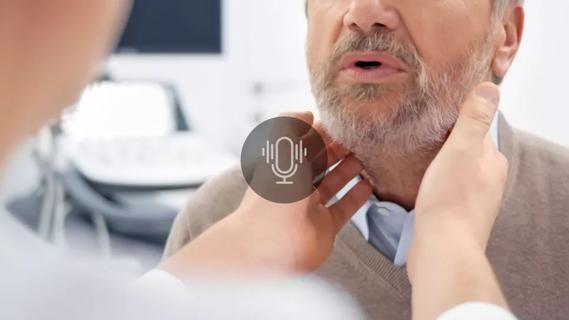
Expert advocates for a stepladder approach

With a wide scope of skills, comprehensive otolaryngologists care for patients of all ages in the community

A comprehensive evaluation and multidisciplinary care are key to caring for patients with vestibular disorders

By using free vascularized fascia lata flaps, surgeons can overcome some of the aesthetic and functional challenges historically associated with nasal reconstruction
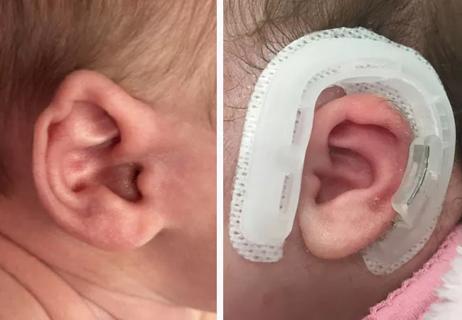
Restoring the ear to normal anatomy
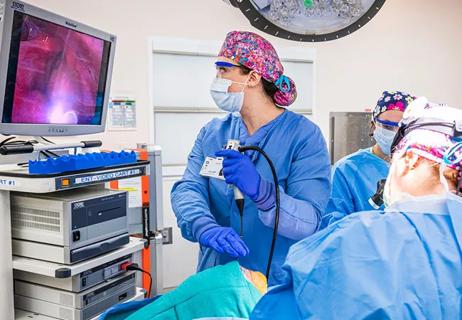
Personalized care enhances patient experience, optimizes voice quality

By changing the patient access flow, patients are able to see the right provider faster, and surgeons are able to spend more time in the OR and less time in clinic